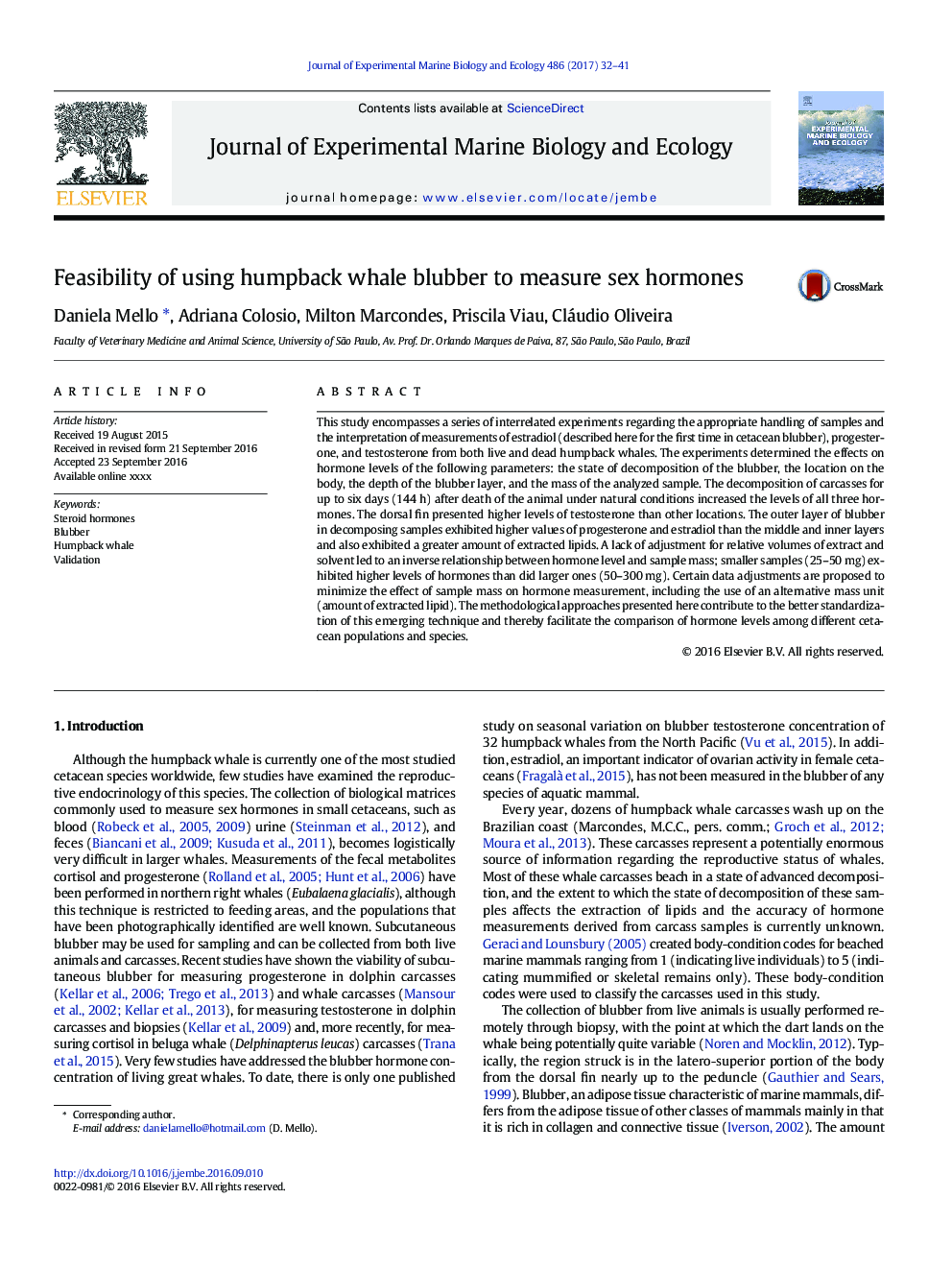| Article ID | Journal | Published Year | Pages | File Type |
|---|---|---|---|---|
| 4395163 | Journal of Experimental Marine Biology and Ecology | 2017 | 10 Pages |
•Estradiol can be extracted and measured from blubber of humpback whales.•Decomposition carcass up to the sixth day showed an increasing trend in blubber hormone measurement.•The dorsal fin of humpback whales should be avoided as a sampling site.•Blubber layers can exhibit different hormone concentrations in decomposing animals.•The blubber mass sample can significantly alter hormone measurement.
This study encompasses a series of interrelated experiments regarding the appropriate handling of samples and the interpretation of measurements of estradiol (described here for the first time in cetacean blubber), progesterone, and testosterone from both live and dead humpback whales. The experiments determined the effects on hormone levels of the following parameters: the state of decomposition of the blubber, the location on the body, the depth of the blubber layer, and the mass of the analyzed sample. The decomposition of carcasses for up to six days (144 h) after death of the animal under natural conditions increased the levels of all three hormones. The dorsal fin presented higher levels of testosterone than other locations. The outer layer of blubber in decomposing samples exhibited higher values of progesterone and estradiol than the middle and inner layers and also exhibited a greater amount of extracted lipids. A lack of adjustment for relative volumes of extract and solvent led to an inverse relationship between hormone level and sample mass; smaller samples (25–50 mg) exhibited higher levels of hormones than did larger ones (50–300 mg). Certain data adjustments are proposed to minimize the effect of sample mass on hormone measurement, including the use of an alternative mass unit (amount of extracted lipid). The methodological approaches presented here contribute to the better standardization of this emerging technique and thereby facilitate the comparison of hormone levels among different cetacean populations and species.
